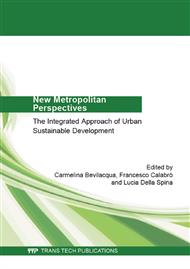p.330
p.338
p.344
p.351
p.356
p.364
p.376
p.380
p.386
Challenging Inclusivity Urban Agriculture and Community Involvement in San Diego
Abstract:
In recent years, destiny of cities has proven to be connected to efficiency and resilience of their ‘Green Infrastructures’, related agri-forestry strategies and health and food security policies.Policy-makers are increasingly dealing with such issues by means of specific sectorial measures including food system arrangements for health and sustainability, even in order to preserve fringe areas threatened by urban growth.Across the US, where ‘food deserts’ heavily shape access to fresh, local and healthy food, the growing consumers’ demand is being addressed by Urban Agriculture practices giving new perspectives to blighted zones of the post-crisis cities and tackling social malaise related to the massive migration.The ‘New Roots Community Farm’ in City Heights neighbourhood, San Diego, California, shows an intriguing potential, matching social inclusion and physical-economic redevelopment.
Info:
Periodical:
Pages:
356-363
Citation:
Online since:
June 2014
Authors:
Permissions:
Share:
Citation:


